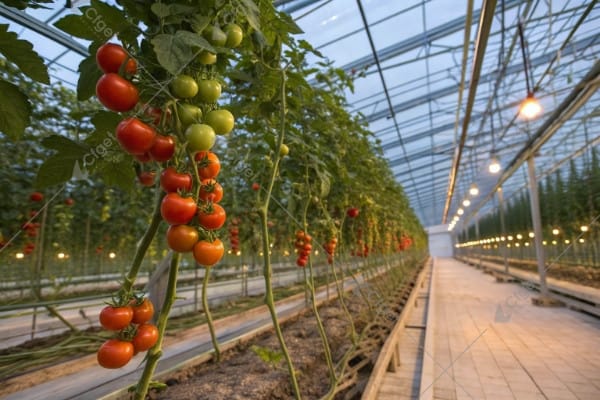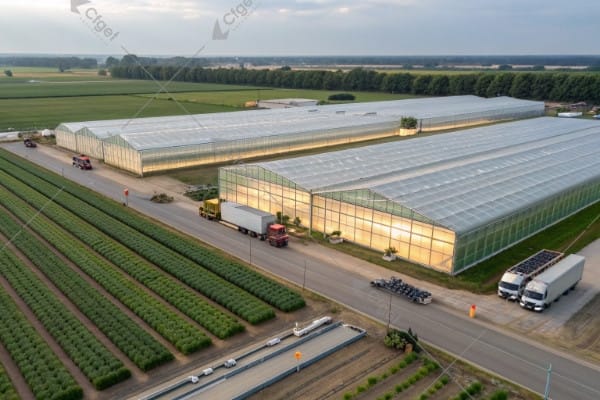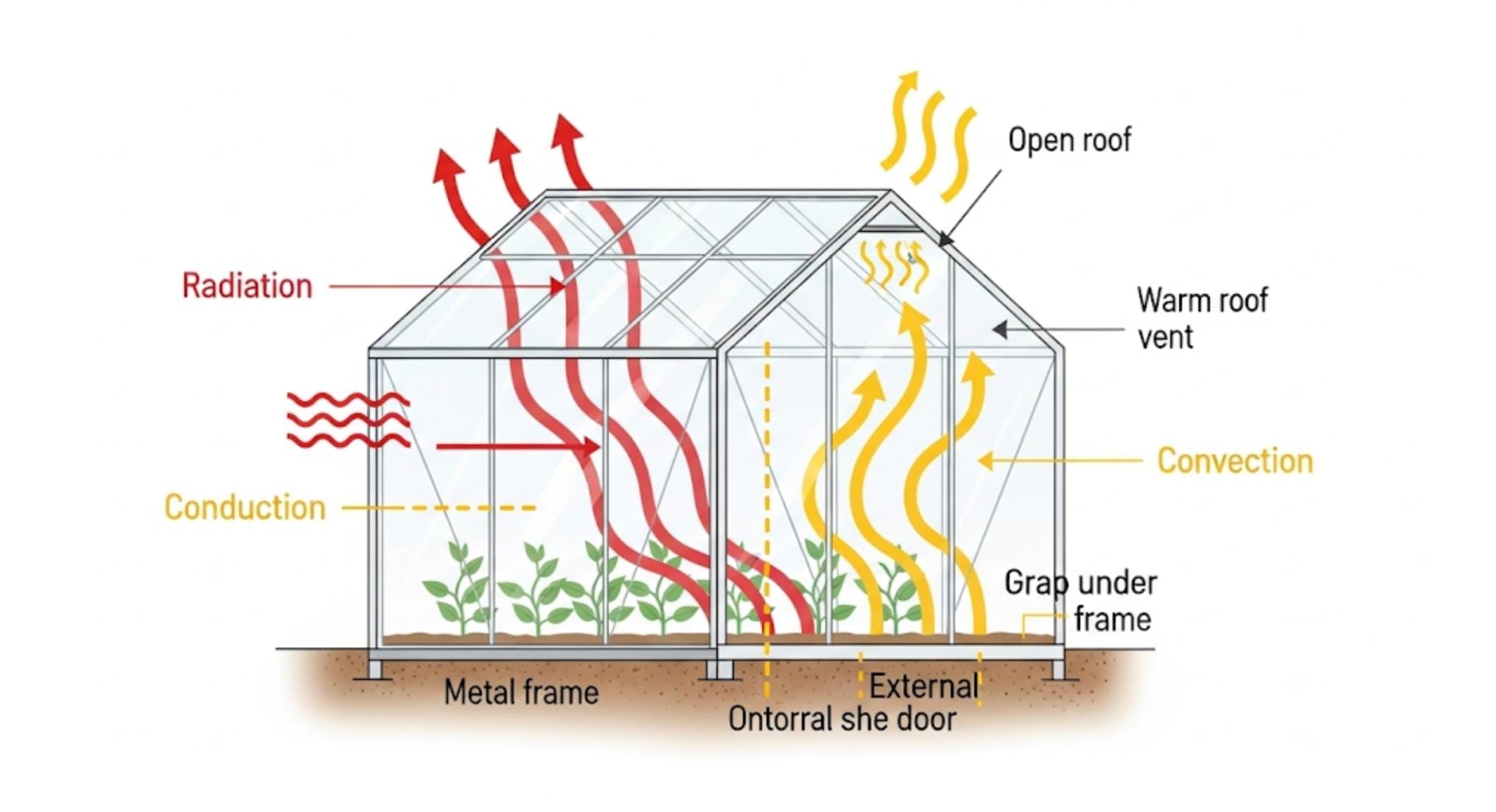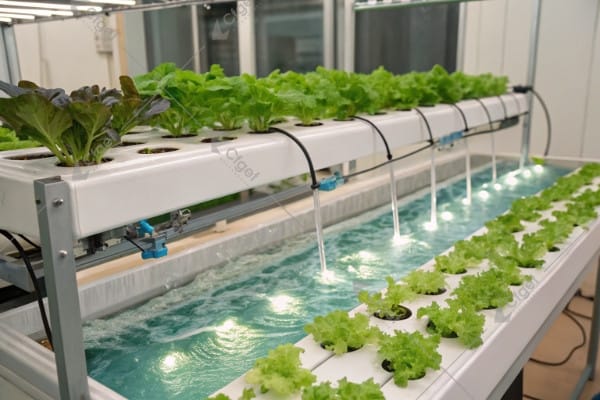Struggling with limited space, water shortages, or short growing seasons? Traditional farming faces many challenges that can restrict how much food we produce.
Yes, hydroponic greenhouses offer real advantages. You can expect significantly higher crop yields, achieve faster plant growth, and use much less water compared to conventional soil-based agriculture. It’s a powerful combination for modern farming.
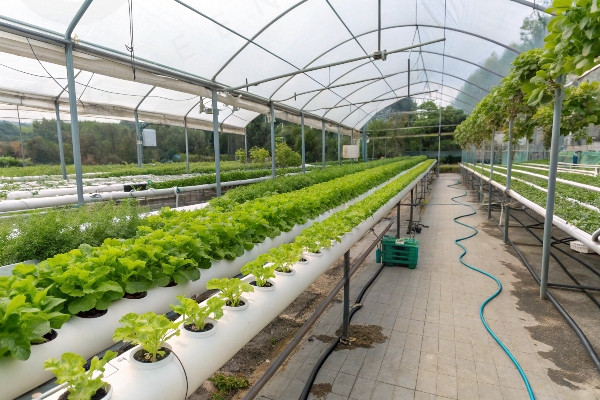
These benefits sound great, right? But how exactly does growing plants without soil inside a greenhouse lead to such improvements? We work with growers worldwide, and I’ve seen firsthand how this technology transforms operations. Let’s break down these advantages one by one, looking at how hydroponics and controlled greenhouse environments work together to create super-productive farming systems. We’ll explore the technology, the practical results, and what it means for different types of growers.
Don’t miss out: ——Everything about hydroponic systems
Maximizing Crop Yields with Hydroponic Greenhouse Technology?
Are you finding it difficult to increase your farm’s output? Limited land and unpredictable conditions often cap how much you can harvest using traditional methods.
Hydroponic greenhouses directly boost crop yields. Plants get precisely the nutrients they need, allowing for denser planting and quicker growth cycles. This means more harvests per square meter, year after year.
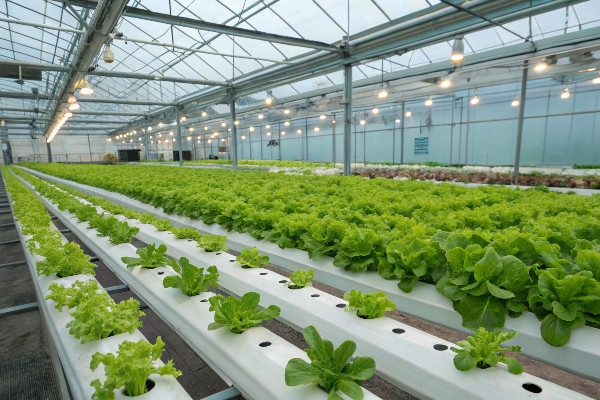
So, how does this yield increase actually happen? It starts with feeding the plants. In hydroponics, we dissolve all the essential minerals directly into water. This water-and-fertilizer mix flows right to the roots. Plants don’t waste energy growing extensive root systems searching for nutrients in the soil. Instead, they absorb everything they need easily. This lets them focus their energy on growing leaves, fruits, or whatever crop we want. I’ve seen this make a huge difference, especially for leafy greens like lettuce and spinach. They just grow faster and fuller.
Because the nutrients are delivered right to the roots, we can also place plants much closer together. Think about it: in a field, plants need space so their roots don’t compete too much. In a hydroponic system, competition for nutrients isn’t an issue. This higher planting density is a major factor in getting more yield from the same amount of space. We often set up systems with multiple layers or vertical towers, especially in our CFGET projects, pushing the yield per square meter even higher. It’s common to see yields jump several times compared to field growing. For example, a client growing lettuce might go from 5 kg per square meter in a field to over 20 kg per square meter in a well-managed hydroponic greenhouse.
Faster growth cycles also contribute significantly. With optimal nutrients, water, and often controlled climate inside the greenhouse, plants reach maturity quicker. For many leafy vegetables, like the lettuce, spinach, and cabbage many of our clients grow, a cycle might be just 30-35 days from seedling to harvest. Compare that to potentially longer and less predictable cycles outdoors. More cycles per year directly translate to more total yield annually. It creates a steady, reliable production flow.
Here’s a simple comparison based on what we typically see:
| Feature | Traditional Soil Farming | Hydroponic Greenhouse Farming |
|---|---|---|
| Nutrient Delivery | Uneven, depends on soil | Precise, direct to roots |
| Planting Density | Lower | Higher (often 2-4x+) |
| Growth Cycle | Longer, weather-dependent | Shorter, consistent |
| Harvests per Year | Fewer | More (often double or more) |
| Typical Yield | Baseline | Significantly Higher |
Of course, achieving these high yields requires careful management, particularly getting the water-and-fertilizer mix right. But the potential is undeniable. It addresses a core need for our clients, whether they are large producers needing volume or high-value growers seeking maximum return from their space.
Water Conservation in Agriculture: Is the Efficiency of Hydroponic Greenhouses Significant?
Water is becoming scarcer and more expensive in many parts of the world. Traditional agriculture uses vast amounts, facing pressure to become more efficient.
Yes, the water efficiency of hydroponic greenhouses is highly significant. These systems can use up to 90% less water than soil-based farming because water is recirculated and evaporation is minimized.
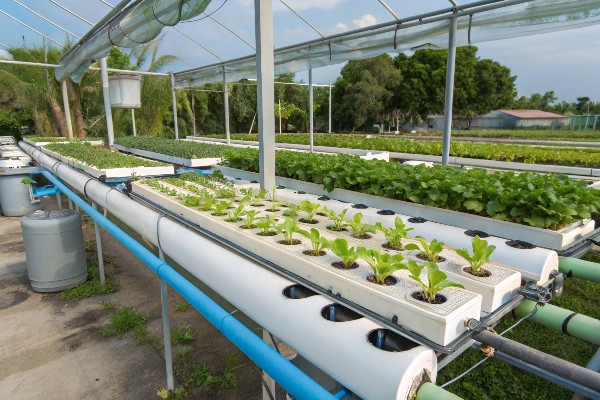
The key to this efficiency is recirculation. In most hydroponic setups, like Nutrient Film Technique (NFT) or Deep Water Culture (DWC), the water-and-fertilizer mix isn’t just used once and discarded. It flows past the roots, and any unused water is collected and pumped back to the main reservoir. There, we can check the nutrient levels and pH, adjust them as needed, and send the water back to the plants. This closed-loop approach drastically cuts down on waste. Think about field irrigation: a lot of water evaporates from the soil surface, runs off the field, or seeps too deep for roots to reach. That water is effectively lost. In hydroponics, nearly all the water stays within the system, directly available to the plants.
We also see much less evaporation inside a greenhouse compared to an open field, especially when using systems like NFT where the water flows in channels or DWC where the roots are submerged. The enclosed environment helps maintain higher humidity around the plants, reducing transpiration (water loss from leaves), although we still need good ventilation to manage this properly, especially in humid climates like Southeast Asia – something CFGET designs account for. Even systems like aeroponics, where roots are misted (as mentioned in my insights, this can be great for crops like potatoes needing airy root zones), are designed to be highly water-efficient, delivering water directly onto the root surfaces in a controlled chamber.
Consider these points:
- Recirculation: Water is reused multiple times, minimizing waste.
- Reduced Evaporation: Less surface area exposed compared to soil; greenhouse enclosure helps.
- No Runoff/Deep Percolation: Water stays contained within the system.
- Targeted Delivery: Water goes directly to the roots where it’s needed.
Here’s how water use might compare:
| Farming Method | Typical Water Use Characteristic | Relative Water Efficiency |
|---|---|---|
| Traditional Field | High losses to runoff, evaporation | Low |
| Drip Irrigation (Soil) | More targeted, but still soil losses | Medium |
| Hydroponic Greenhouse | Recirculation, minimal losses | Very High (up to 90% savings) |
This water-saving aspect is critical for many of our clients. In arid regions of Central Asia or areas facing drought, it’s often the primary driver for adopting hydroponics. For clients in Europe and America focused on sustainability certifications, demonstrating significant water savings is a major plus. It’s not just about conserving resources; it often translates to lower operating costs for water and fertilizer, improving the farm’s bottom line. I remember working with a grower in a very dry region who could barely sustain traditional farming; switching to a recirculating hydroponic system in a greenhouse allowed them to not only survive but thrive.
Year-Round Crop Production: Is This Possible with Controlled Environment Hydroponics?
Farmers often face limitations due to seasons. Frost, excessive heat, or monsoon rains can halt production, leading to unstable supply and income.
Absolutely. Controlled environment hydroponics makes year-round crop production possible. By managing temperature, light, and humidity inside a greenhouse, you can grow crops regardless of the external weather or season.
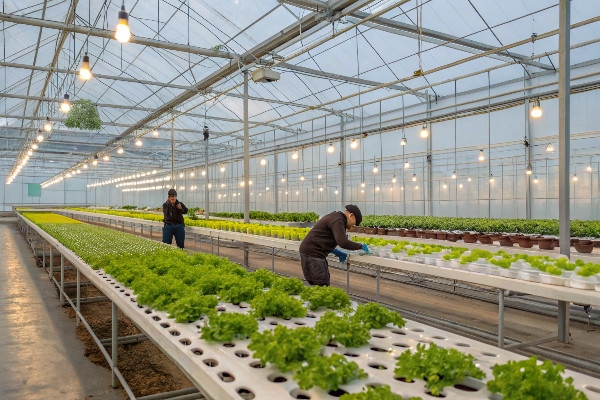
The magic here lies in creating the perfect growing conditions 24/7, 365 days a year. The greenhouse structure itself provides the first layer of protection, shielding crops from harsh weather like storms, heavy rain, hail, excessive wind, and extreme temperatures (both heat and cold). This immediately removes many of the variables that plague outdoor farming. I’ve seen greenhouses we built at CFGET stand strong through conditions that would have wiped out field crops nearby.
Inside this protected space, we use technology to fine-tune the climate. Heating systems combat cold weather, allowing growers in temperate or cold climates to produce warm-season crops even in winter. Cooling and ventilation systems, like fans and pad evaporative cooling, are crucial in hot climates (like much of Southeast Asia) to prevent heat stress. We often design specific ventilation strategies based on the local climate and crop requirements. Humidity control is also key, preventing fungal diseases in damp conditions or reducing plant stress in dry ones.
Light is another critical factor. While greenhouses maximize natural sunlight, day length varies with seasons, and cloudy weather can reduce light levels. To ensure consistent growth year-round, we integrate supplemental lighting, typically energy-efficient LEDs. These can be programmed to provide the exact light spectrum and duration plants need for optimal photosynthesis, regardless of the time of year or outdoor conditions. This is essential for maintaining fast growth cycles and consistent quality. Many growers, especially those in "plant factories" (fully enclosed, artificially lit environments, sometimes built in containers as mentioned in my insights) rely entirely on artificial light. While about 70% of hydroponics happens in greenhouses using natural light supplemented as needed, these fully controlled systems offer ultimate independence from external conditions.
Here’s a look at the controlled parameters:
| Environmental Factor | Control Method in Greenhouse | Benefit |
|---|---|---|
| Temperature | Heating, Cooling, Ventilation | Optimal range maintained year-round |
| Water | Hydroponic System (recirculation) | Consistent supply, efficient use |
| Light | Natural + Supplemental Lighting (LEDs) | Consistent intensity & duration |
| Humidity | Ventilation, Fogging/Dehumidifying | Reduced stress, disease prevention |
| Pests/Diseases | Physical Barrier, Monitoring | Reduced pressure (more on this next) |
| Weather | Greenhouse Structure | Protection from extremes |
This ability to produce continuously offers huge advantages. Growers can supply markets consistently, fetching stable prices and building reliable relationships with buyers. It avoids the boom-and-bust cycles tied to seasonal availability. For our clients, this means predictable revenue streams. Research institutions also value this control for conducting experiments without weather interference. CFGET focuses on providing the right type of greenhouse structure and climate control systems tailored to the region – durable designs for Central Asia’s extremes, optimized ventilation for Southeast Asia’s humidity, and high-precision controls often demanded in Europe and America.
Pest and Disease Control in Hydroponic Greenhouses: Is It Easier?
Fighting pests and diseases is a constant headache in agriculture. It costs time, money, and often requires chemical treatments that consumers increasingly dislike.
Yes, managing pests and diseases is generally easier in hydroponic greenhouses. Eliminating soil removes soil-borne threats, and the enclosed environment provides a barrier and allows for quicker detection and targeted responses.
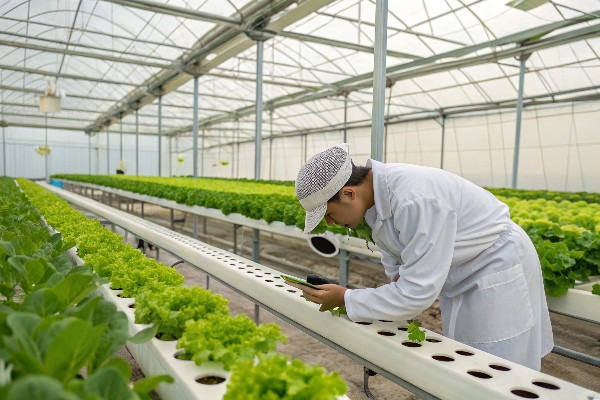
One of the biggest advantages starts right under the plants – or rather, what’s not under them: soil. Soil is a natural habitat for countless insects, nematodes, fungi, and bacteria that can attack plant roots or emerge to infest the rest of the plant. By growing hydroponically, we completely bypass this massive source of potential problems. No soil means no soil-borne diseases like Fusarium wilt or Verticillium wilt, and no soil-dwelling pests like root-knot nematodes or cutworms. This is a huge relief for growers. I always emphasize this point when talking to farmers tired of battling these persistent soil issues.
The greenhouse structure itself acts as a physical barrier. Screens on vents and careful entry/exit protocols can significantly limit the introduction of flying insects like aphids, thrips, or whiteflies from outside. While pests can still occasionally get in (perhaps on clothing or infested seedlings), the contained environment makes it much easier to spot an infestation early. Regular monitoring, which is simpler in an organized greenhouse setting compared to a vast field, allows for rapid intervention.
When problems do arise, treatments can be more targeted and often less reliant on harsh chemicals. Integrated Pest Management (IPM)1 strategies work very well in greenhouses. This might involve introducing beneficial insects (predators or parasitoids) that attack the pests, using sticky traps to monitor and capture insects, or applying targeted biological or soft chemical controls only where needed. Since the growing area is enclosed, these methods are often more effective than in an open field where beneficial insects might fly away or treatments get washed away by rain.
However, it’s not completely problem-free. Hydroponic systems can face issues with waterborne diseases2, like Pythium or Phytophthora, which thrive in water and can spread quickly through a recirculating system if not managed. This is why water quality management, including occasional sterilization of the nutrient solution (using UV light or ozone, for example) and maintaining optimal root zone oxygen levels, is crucial. Regular cleaning of the system components between crop cycles is also standard practice.
Let’s compare the approaches:
| Aspect | Traditional Soil Farming | Hydroponic Greenhouse Farming |
|---|---|---|
| Soil-borne Issues | Major source of pests & diseases | Eliminated |
| Pest Entry | Open environment, easy access | Reduced by physical barrier (greenhouse) |
| Detection | Harder over large, uneven areas | Easier with regular monitoring |
| Treatment | Often broad-spectrum spraying | Targeted, IPM-focused, biologicals |
| Specific Risks | Soil pests, weeds, weather impact | Waterborne diseases, system hygiene |
| Overall Pressure | High | Significantly Reduced |
For growers, this easier management means less crop loss, lower spending on pesticides, and the ability to produce cleaner, safer food – a strong selling point in today’s market. This aligns well with the sustainability goals of many European and American clients and provides the reliability needed by large producers everywhere.
Choosing the Right Hydroponic System for Your Greenhouse Crops?
You’re convinced about hydroponics in a greenhouse, but see many different setups. Tower systems, pipes, deep tanks – which one is best?
The best hydroponic system depends on the crops you want to grow, your space, budget, and management style. Different systems like NFT, DWC, Aeroponics, and vertical setups offer unique advantages for specific plants.
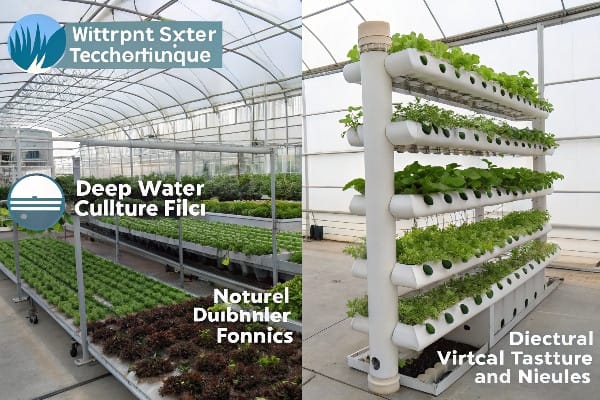
As I mentioned in my insights, there isn’t just one way to do hydroponics. The core idea is always delivering that essential water-and-fertilizer mix directly to the roots without soil, but how we do it varies. Let’s look at some common methods we see our CFGET clients using:
- Nutrient Film Technique (NFT)3: This is very popular for leafy greens like lettuce, spinach, and herbs. Plants sit in channels or gullies, and a thin film of nutrient solution constantly flows along the bottom, bathing the roots. It’s efficient with water and allows for easy harvesting. We often help clients design NFT layouts optimized for their greenhouse space.
- Deep Water Culture (DWC): Here, plant roots hang down into a large reservoir of oxygenated nutrient solution. Styrofoam rafts often float on top, supporting the plants. DWC is great for water-loving plants and can be simpler to manage in some ways, though ensuring proper oxygenation is key. Some larger leafy greens and certain fruiting plants do well in DWC.
- Media-Based Systems (e.g., Drip Systems): These use an inert growing medium like coco coir, rockwool, or perlite to support the roots, with nutrient solution delivered via drip emitters. This feels a bit closer to traditional growing and works well for larger plants like tomatoes, cucumbers, peppers, and strawberries that need more root support. The medium provides a buffer for water and nutrients.
- Aeroponics / Mist Systems: Plant roots are suspended in the air within a chamber and periodically misted with nutrient solution. This provides excellent oxygenation to the roots. As I noted, this method can be particularly good for root crops like potatoes, where air circulation around the developing tubers is beneficial. It’s often considered the most technologically advanced and potentially highest-yielding, but requires precise control.
- Vertical Systems (Towers, Multi-layer): These systems stack growing levels vertically, often using NFT or drip techniques. They dramatically increase planting density per square foot of greenhouse floor space, making them ideal for urban farming or maximizing output in limited areas. We’ve installed many vertical systems for clients focused on high-density leafy green production.
- Aquaponics: This combines hydroponics with aquaculture (fish farming). Fish waste provides nutrients for the plants, and the plants help clean the water for the fish. It’s a symbiotic system that appeals to growers interested in integrated, sustainable approaches. Some of our clients really like this fish-and-vegetable combination.
The choice depends heavily on the crop. Leafy greens generally thrive in NFT or DWC. Fruiting vegetables often need the support of media-based systems. Root crops might benefit from aeroponics. Vertical systems suit lightweight, fast-growing crops.
Here’s a quick guide:
| System Type | Common Crops | Key Characteristics |
|---|---|---|
| NFT | Lettuce, herbs, spinach, strawberries | Thin film flow, good for smaller plants, efficient |
| DWC | Lettuce, kale, some herbs, basil | Roots submerged, needs good aeration, simpler setup |
| Drip (Media) | Tomatoes, peppers, cucumbers, strawberries | Uses inert media, good support for larger plants |
| Aeroponics (Mist) | Leafy greens, herbs, potatoes, strawberries | Roots misted in air, high oxygen, needs precision |
| Vertical | Leafy greens, herbs, strawberries | Stacked layers, high density, space-saving |
| Aquaponics | Leafy greens, herbs, some fruiting veg | Integrated fish/plants, sustainable nutrient source |
Regardless of the system, the greenhouse environment is crucial. It provides the stable temperature, light, and humidity needed for the hydroponic system to perform optimally. Good ventilation and cooling are essential, as mentioned, especially for intensive production. And yes, as highlighted in my insights, mastering the nutrient mix recipe is fundamental. It often takes some trials for new hydroponic growers to perfect the balance for their specific crops and water source. That’s an area where experience, like CFGET’s, can provide valuable guidance. We help clients not just select the right system and greenhouse, but also understand the operational aspects needed for success.
Conclusion
Hydroponic greenhouses deliver higher yields, faster growth, and use far less water. They offer control over the growing environment for year-round production with easier pest management, boosting farm productivity and sustainability.“`
Explore how IPM strategies can enhance pest control while minimizing chemical use, promoting sustainable farming practices. ↩
Learn effective methods to prevent and control waterborne diseases in hydroponics, ensuring healthy crop growth. ↩
Discover the advantages of NFT for growing leafy greens and how it optimizes water usage in hydroponic systems. ↩

